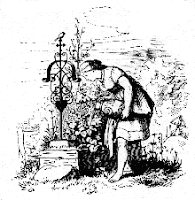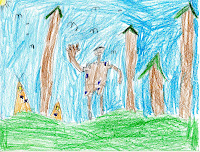 The age-old tradition of the Cinderella story found in the Western world is seemingly familiar to the inner child in us all. Perhaps the story was read or told to us as we sat at an elder’s knee. Perhaps emotions ran deep as our hearts were invested in what would become of our favorite heroine Cinderella. We lamented the death of her mother that would blindly lead Cinderella’s father into a second marriage to a cruel woman, who along with her two daughters would ill-treat Cinderella forcing her into a life domestic servitude and drudgery. She would toil long hours at a variety of tasks including washing dishes, sweeping floors, mending clothes and would then collapse among cinders from a chimney in a corner, thus earning her her name. But for those of us who read or listened to her plight, surely there was applause as the fairy godmother stepped into the picture. With the wave of her magic wand she transformed Cinderella’s rags into a resplendent gown, bedecked her feet in glass slippers and turned a pumpkin into a coach that would ferry Cinderella to the ball where she would meet and ultimately marry her prince and live happily ever after.
The age-old tradition of the Cinderella story found in the Western world is seemingly familiar to the inner child in us all. Perhaps the story was read or told to us as we sat at an elder’s knee. Perhaps emotions ran deep as our hearts were invested in what would become of our favorite heroine Cinderella. We lamented the death of her mother that would blindly lead Cinderella’s father into a second marriage to a cruel woman, who along with her two daughters would ill-treat Cinderella forcing her into a life domestic servitude and drudgery. She would toil long hours at a variety of tasks including washing dishes, sweeping floors, mending clothes and would then collapse among cinders from a chimney in a corner, thus earning her her name. But for those of us who read or listened to her plight, surely there was applause as the fairy godmother stepped into the picture. With the wave of her magic wand she transformed Cinderella’s rags into a resplendent gown, bedecked her feet in glass slippers and turned a pumpkin into a coach that would ferry Cinderella to the ball where she would meet and ultimately marry her prince and live happily ever after.The world owes much to French-born Charles Perrault (1628-1703) for this age-old and time-tested version of the Cinderella tale. The product of an upper-class bourgeois family, Perrault served as a lawyer for Louis XIV dubbed “The Sun King,” who threw lavish soirees for French aristocrats at his illustrious Palace of Versailles. In 1697, Perrault compiled and wrote a renowned collection of French Fairy tales. They were known in the country as Histoires ou Contes du temps passé. This translated into English as Stories or Tales of Times Past. Perrault’s tales were based on the earlier work of Giambattista Basile which was coined La Gatta Cennerentola in 1634. Perrault’s most famous story was Cinderella known in France as Cendrillion, ou la petite pantoufle de verre. It translates into English as Cinderella or the Little Glass Slipper. Authors Temple, Martinez, Yokota and Naylor (2002) note that: “If some of these tales wax excessively enthusiastic about glittering ballrooms, and if the heroines sometimes seem drawn like moths to candles by the gaiety of palace life, it helps to remember that the tales took their form during the ling reign of the Sun King, Louis XIV.”
As far as the Cinderella legacy goes, the world is indebted as well to German brothers Jacob and Wilhelm Grimm born in 1785 and 1786. Ashenputtel is the Grimms’ version of the Cinderella story. According to author Joanna Cole (1982): “While studying law at Marburg, the Grimm brothers became fired with the conviction, promoted by the poet and dramatist Clemens Brentano and the legal scholar Friedrich Karl von Savigny, that the spirit and the culture of the German people resided in the old tales and legends.”
The Brothers Grimm spent their lives collecting tales from German storytellers. During this period in the early nineteenth century, German society was comprised of a federation of principalities. Wealthy landowners were highest on societal totem pole whereas peasants were led primitive lives were uneducated and kept at the bottom rung of society. Communications were poor and travel curtailed by bad roads. Illiteracy ran high among peasants, nevertheless, making this a rich breeding ground for oral storytelling which served the Brothers’ Grimm well. They made the acquaintance of a peasant woman called Frau Viehmannin who lived near Kassell. She was known as “Gammer Grethel” and would prove a marvelous resource for the Grimms’ tales. According to Temple (et. al.) Frau “learned to tell her tales slowly enough that the brothers could write them down almost verbatim. Still, some editing was inevitable as they heard competing versions of the same tales.”
In 1812 the Grimms published their stories in a first volume called Kinde und Hausmarchen. It translates into English as Nursery and Household Tales. They compiled a second volume in 1815. The Grimms gave the world 211 tales that are comprised of some of the most popular stories in the Western world. They gave us “Cinderella,” “Hansel and Gretel,” “Rapunzel,” “Rumplestiltskin,” and “Snow White and the Seven Dwarfs.” According to Temple: “The association of folktales and fairy tales with predominantly child audiences began only about 200 years ago, with the brothers Grimm.” She adds that they were notable scholars of language who “built a bridge between the oral tradition and the written one.”
Author Angela Leeper (2002) credits Marian Roalfe Cox who researched and abstracted hundreds of versions of Cinderella. In 1893, Cox published Cinderella: Three Hundred and Forty-Five Variants of Cinderella, Catskin, and Cap O’ Rushes. The English Folklore Society made the publication possible. Cox’s work contained 345 published summaries of the Cinderella tales. She assembled the works from books, journals and the national archives. It set the groundwork for further scholarly research and other literary versions of the tale that would follow.
Beyond Perrault and the Brothers Grimm, the Cinderella story is universal in origin. In English-speaking countries such as America she is called Cinderella. She is known in China as Yeh-Shen (or Yeh-hsien), in Egypt as Rhodaphis, and in Russia as Vasilisa. She is Angkat in Cambodia. She is the Turkey Girl in the Native American Zuni tradition. She is the Rough-Faced Girl in Algonquin Native American culture. She is Adelita and Domitila in Mexico and Mexican American traditions.
The earliest known written version of the Cinderella story is said to have derived from China around A.D. 860. It was found in an ancient manuscript called The Miscellaneous Record of You Yang. Tuan Ch'eng-Shih apparently authored it during the time of the Tang Dynasty. Although author Judy Sierra notes that "even earlier, nearly two thousand years ago, a Greek writer told of an Egytian King who searched for the unknown owner of a beautiful sandal."
Following the publication of the Grimms' fairy tales they were widely translated around the world. Authors such as Cole claim that these stories inspired scholars around the world to collect tales from their own countries. She says that: "After time, the science of folklore spread to Asia, Africa, and the Americas, so that at the present, tales have been published from almost everywhere."
Why are there similar stories such as Cinderella around the world?
Cole explains: "To account for the existence of similar stories everywhere, some scholars believed that the world's tales originally spread from one source by diffusion; that is, the plots were thought to have originated in India and traveled via pilgrims, merchants and immigrants to local storytellers everywhere, who adopted the stories as their own, changing details in the telling, but keeping the bones of the tales intact." Other theories support that these stories themes are universal and developed simultaneously. Today many scholars and folklorists believe in the combination of these theories.
Multicultural stories have become a growing trend in the United States. "The 1980s saw a boom in children's publishing, spurred by the whole-language movement, which encouraged the use of trade books in the classroom" (Baker, 1990). According to writer Angela Leeper (2002), this spawned the publication of multicultural Cinderella retellings. "With more demand for books representing various cultures and an increased use and integration of trade books across curricula, the hot topic in children's publishing in the 1990s became multiculturalism" (Yeh, 1993). Leeper (2002) adds that: "This time period saw even more Cinderellas from Korean and Middle Eastern to Cambodian, Appalachian, Jewish, Hmong, Caribbeans, and Native American."
Writer Rebecca A. Kaminski (2002) adds that: "The multicultural Cinderella books have similar length (32 pages average), complex yet familiar story line, appeal to a variety of age levels (8-13 years), and are structurally representative of the folktale genre." According to Temple, there are some 650 variations of the Cinderella story.
References
Cole, J. (1982). Best loved folktales of the world. USA: Doubleday.
Grimm, J. & Grimm, W. Grimm's complete fairy tales. NY: Nelson Doubleday, Inc.
Kaminski, R.A. (2002). Children's literature in the classroom: Cinderella to Rhodopolus. The Dragon Lode, 20, 31-36.
Leeper, A. (2002). Beyond fairy godmother and glass slippers: A look at multicultural variants of Cinderella. Multicultural Review, 24-31.
Sierrra, J. (1992). Cinderella: The Oryx multicultural folktale series. Phoenix: Oryx Press.
Temple, C., Martinez, M., Yokota, J., & Naylor, A. (2002). Children's books in children's hands: An introduction to their literature. (2nd ed.), Traditional literature (pp. 136-175). Boston: Allyn and Bacon.
* Royalty-free black and white Cinderella illustrations used in this blog were retrieved from Google images and Project Gutenberg.

















